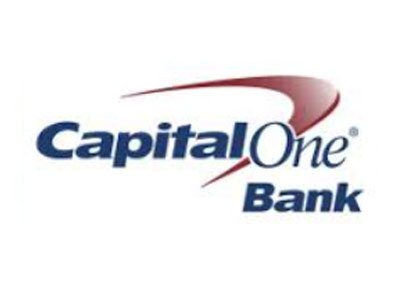Why Are Auto Insurance Rates So High in 2025? How to Save Money Now
Understanding the rising costs of auto insurance and what it means for your wallet in 2025.
Discover practical tips to lower your auto insurance rates starting today.
Feeling overwhelmed by unexpected expenses or dreaming of a big purchase but unsure how to make it happen? Many people face financial challenges that make it tough to manage everyday needs or plan for the future without a little help.
Finding the right personal loan can feel confusing and stressful, but it doesn’t have to be that way.
To help you through this process, we’ll walk you through everything you need to know about personal loans, especially focusing on important steps to take.
You’ll find clear, easy-to-understand advice, practical tips, and handy shortcuts to make your journey smoother and less stressful.
Understanding What a Personal Loan Is and When to Use It
Before diving into applications and interest rates, it’s crucial to understand what a personal loan really is. A personal loan is an unsecured loan, meaning it doesn’t require collateral like a house or car. It’s often used for debt consolidation, home improvements, emergency expenses, or major purchases.
Using a personal loan wisely can help you manage your finances better, avoid high-interest credit card debt, and provide a clear repayment timeline. However, taking on a loan without a plan may worsen financial struggles.
Continue reading
-

Flexible Loan Amounts Starting at $1,000
-

Wells Fargo Personal Loan: Borrow Starting at $2,500
-

Old National Bank Offers Loan Options Starting at $2,000 — Is It Right for You?
-

Applying for a Personal Loan at JPMorgan Chase Starting at $2,500
-

Personal Loan with Wells Fargo: Interest Rates and Conditions
Evaluate your financial goals carefully before applying. Are you covering an emergency, or financing a luxury? Knowing your reason guides the loan size and repayment period you should look for.
Personal loans generally have fixed interest rates and monthly payments, making budgeting easier. This transparency is one of the biggest advantages over credit cards.
Be mindful that interest rates depend on your credit score, income, and debt levels. A higher credit score typically means better loan terms.
Finally, know the difference between secured and unsecured loans. While personal loans are mostly unsecured, some lenders might offer a secured option at lower rates.
How to Qualify for a Personal Loan: Key Requirements
Qualifying for a personal loan involves meeting certain criteria set by lenders. Here’s what typically matters:
- Credit score: Most lenders expect a minimum score, often around 600-650.
- Stable income: Proof of steady income is required to assure repayment ability.
- Debt-to-income ratio: This compares your debts to your income, ideally under 40%.
- Employment history: Lenders prefer borrowers with at least a year of stable employment.
- Residency and age: You must be a legal resident and over 18 years old.
- Valid identification and documentation: Social Security number, bank statements, and pay stubs are generally required.
Improving any of these factors before applying can increase your chances of approval and help secure better loan terms.
If your credit score is lower, don’t lose hope. There are lenders and loan products that cater to less-than-perfect credit, often at higher interest rates.
Remember, being honest on your application prevents future headaches and possible loan rejection.
Discover flexible personal loans from Capital One starting at $2,000. Competitive rates and easy application to help you reach your financial goals.Capital One Personal Loans
Step-by-Step Guide to Applying for a Personal Loan
Applying for a personal loan can be simpler than you think when you follow these steps:
- Check your credit score: Obtain a free score to understand your standing.
- Determine how much you need: Borrow only what you require and can repay comfortably.
- Research lenders: Look beyond banks—online lenders, credit unions, and financial institutions offer different deals.
- Compare interest rates and terms: The Annual Percentage Rate (APR) shows the total cost of the loan.
- Prepare your documents: Gather proof of income, ID, and other required paperwork.
- Fill out the application: Many lenders provide 100% online applications for convenience.
- Wait for approval: Some lenders offer instant decisions, others take a few days.
- Review the loan offer carefully: Understand fees, penalties, and payment schedules before accepting.
This thorough approach ensures you avoid surprises and pick the best option for your needs.
Managing Your Personal Loan Wisely After Approval
Once you have your loan, managing it responsibly is key to maintaining financial health. Here are essential tips:
- Create a repayment budget: Include monthly payments as a non-negotiable expense.
- Set up automatic payments: Avoid late fees by automating your loan payments.
- Avoid borrowing more: Stick to your original loan amount to keep finances stable.
- Track your loan balance: Use lender portals or apps to monitor repayment progress.
- Communicate with your lender: If you face difficulties, reach out immediately for assistance or temporary relief.
- Consider early repayment if possible: Saving on interest fees can be a big benefit if your loan has no prepayment penalty.
Good loan management builds credit history and opens doors for future financial opportunities.
Comparing Personal Loan Options: Banks vs Online Lenders
Choosing where to get your personal loan is just as important as the loan itself. Here’s what you should know:
Banks often offer competitive interest rates, flexible terms, and trusted customer service. However, their application process might be slower and requirements stricter.
Online lenders provide quick, convenient application processes that can be done from anywhere, with faster approvals. They may have looser requirements but often charge higher rates or fees.
Credit unions typically give the lowest interest rates but may require membership and have regional restrictions.
Compare APRs, fees, repayment terms, and customer support before deciding.
Also, check if the lender reports to credit bureaus, which helps with credit building.
Finally, beware of predatory lenders promising guaranteed approval with upfront fees.
Where to Find Reliable Personal Loans for Your Needs
If you’re looking for trusted lenders, consider well-known banks and financial institutions with solid reputations:
For example, Wells Fargo offers personal loans starting at $2,500 with competitive rates and flexible terms designed to fit different budgets.
Get a Personal Loan at Wells Fargo 🚀
Another dependable option is Bank of America, which provides personal loans starting at $3,000 with easy online applications and clear terms.
Bank of America Personal Loans Made Easy
These trusted institutions have flexible loans catering to variety of needs — emergency funds, home improvements, or major life events.
Besides banks, consider local credit unions or online lenders with high customer ratings.
Always read reviews and understand terms fully before committing.
Pros and Cons of Taking a Personal Loan
Before deciding, it’s smart to weigh the advantages and disadvantages:
- Pros: Fixed rates and payments, better for managing debt, credit score building, quick access to funds.
- Cons: Possible high interest for lower credit scores, fees, risk of debt cycle if over-borrowed, impact on credit if payments are missed.
Think carefully about your repayment ability and financial goals before applying.
Using loans as part of a healthy financial plan can open doors – but reckless borrowing may cause more harm than good.
Conclusion
Now you have a comprehensive understanding of personal loans—from what they are, how to qualify, to managing your loan smartly. Armed with this knowledge, you’re better equipped to choose the right loan path that fits your needs and financial goals.
Take a moment to review your options carefully and apply the steps outlined here to make an informed decision with confidence. Your financial future can be brighter with smart borrowing and timely repayments.
Ready to learn more? Check out our next article to explore how to improve your credit score fast and boost your loan approval chances!

Easily Calculate Your Loan Interest with Our Free Tool
Understanding how much interest you’ll pay on a loan doesn’t have to be complicated. With our free loan interest calculator, you can estimate your total interest, monthly payments, and overall cost in just a few clicks—no spreadsheets, no confusion.

U.S. Bank Personal Loans from $1,000: What You Need to Know
Finding the right loan in the U.S. can feel overwhelming, especially when you’re uncertain about loan amounts or worried about approval. Many people face the challenge of choosing a loan that fits their financial needs without stretching their budget or risking their credit scores.

Citibank Personal Loans: How to Apply and What to Expect
Feeling overwhelmed by unexpected expenses or dreaming of upgrading your lifestyle but falling short on funds is a common struggle. Many people find themselves wondering how to access quick, reliable financial help without the hassle.
